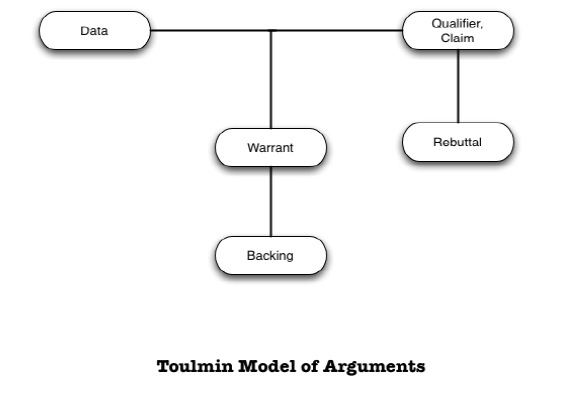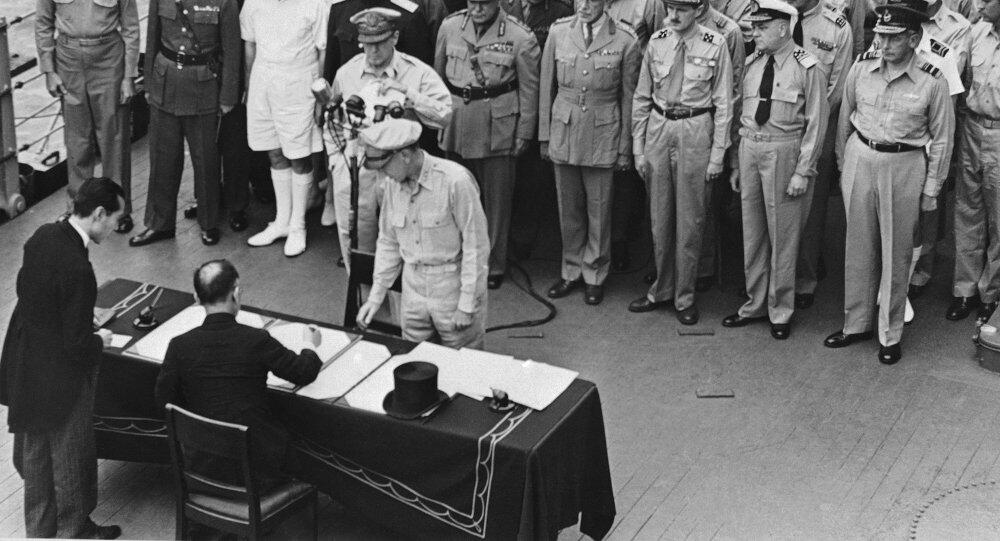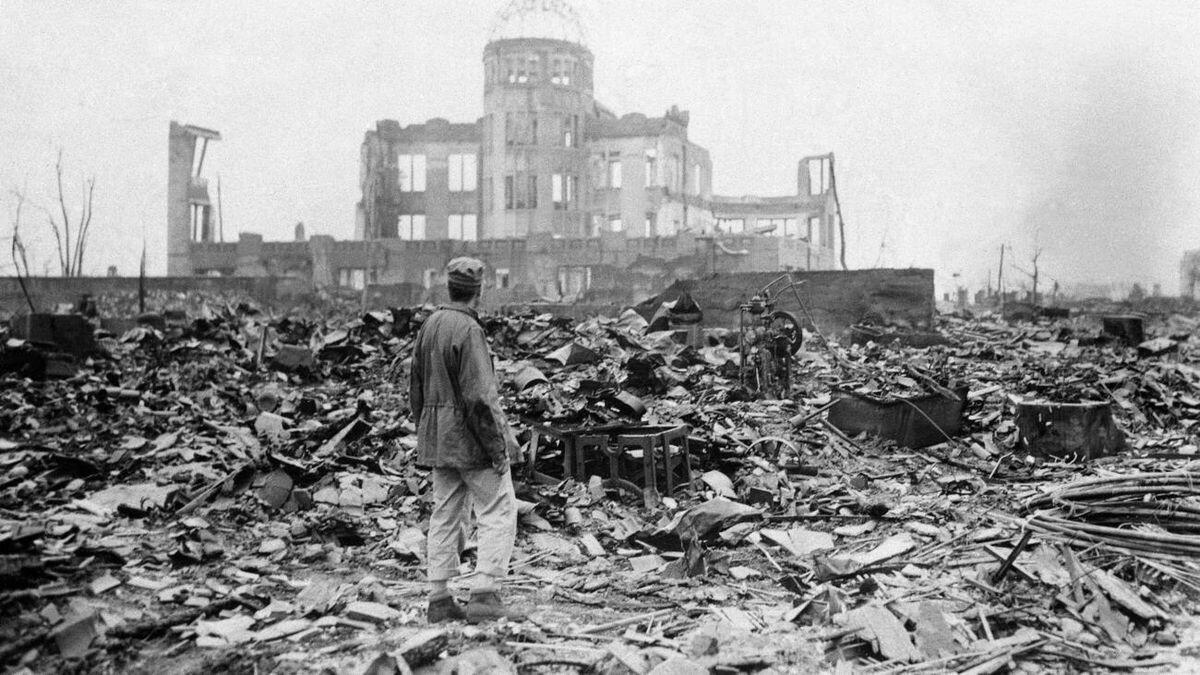Introduction: The Bombing of Hiroshima and Nagasaki
For many years the debate has been ongoing regarding the dropping of atomic bombs on Hiroshima and Nagasaki. While some argue that such an attack was needed to limit the subsequent number of casualties during World War II (further – WWII), others suggest that the US should not have implemented the attack due to the deadly impact on thousands of Japanese civilians. Both perspectives have some significant support as each side of the argument can provide some persuasive evidence. Thus, the purpose of the current paper is to offer two viewpoints on the issue while also arguing in support of one of them using the Toumlin model of argument (Figure 1). The key argument of the paper will be centered around the fact that the bombing was a necessary act of evil that had to be done in order to end the inhumane opposition between countries in WWII.

Background on the Issue: The History
On August 6, 1945, the US-owned B-29 bomber deployed the first atomic bomb on Hiroshima, Japan. The impact of the large explosion destroyed around ninety percent of the city and instantly killed eighty thousand people, with tens of thousands more dying from the severe impact of radiation exposure (Greenwell 35). On August 9, a second bomb was dropped on the city of Nagasaki, killing around forty thousand people (Bodden 15). The devastating effects of the attacks led to Japan’s Emperor Hirohito announcing immediate surrender in WWII, attributing the country’s defeat to the great power of a new and the most inhumane weapon.
The deployment of the atomic bombs on Hiroshima and Nagasaki was linked to the successful trials of the Manhattan project in using plutonium bombs. Funded by the US government, the project led to the creation of a deadly weapon that gave the country a significant advantage in WWII and showed the strength with which others could not compete. The decision to drop the bombs was made based on Japan’s vow to battle to the end regardless of the fact that their allies were already defeated. In addition, the country’s government refused to demand its allies to surrender in late July, fueling the desire of the US to attack as soon as possible. With the support from General Douglas MacArthur and other high-rank military commanders, President Truman made the decision to deploy the weapons. The bombs were expected to not only put war but also place the US in the leading position in determining the course of the post-war period.
One Side of the Issue: In Support of the Bombing
The United States should have attacked Hiroshima and Nagasaki because the act was a justified evil, which helped to stop WWII, helped to establish a global agreement on nuclear disarmament, and prevented the deaths of American troops. In August 1945, the United States found itself in the position to play a defining role in ending one of the darkest periods in global history. The costliest conflict in terms of human life led to millions of casualties, and the use of nuclear weapons presented a chance to end it. It was reasonable for the United States to use the weapon because the country suffered the loss of “more than 418,000 lives of both civilians and military” (Mesika). The losses were considered worth it for preventing thousands of American troops from losing their lives when invading Japan. The grave consequence of losing soldiers was taken seriously by the government, which ordered the deployment of the atomic bombs, knowing the abhorrence of the act but recognizing that without it, the war could lead to unprecedented consequences.
The bombings should have taken place because only after six days since the Nagasaki bombing, Japan announced its surrender, which also marked the end of WWII (see Figure 2). Therefore, the defining role of the event in putting a stop to war is indisputable as it gave the Japanese government every reason to stop fighting. Before the attack, the Japanese Supreme War Council could not reach an agreement on whether or not to surrender. The deadlock that the United States put on Japan was a justified evil that ended the war officially.

The attacks are warranted since the Hiroshima and Nagasaki disasters led to the establishment of global programs of nuclear disarmament. The attacks were the first and the last times when nuclear bombs were used and additionally showed the global society how devastating they could be. After WWII ended, numerous nuclear disarmament programs were developed to prevent the use of atomic weapons of mass destruction (NTI). Such organizations as the ATOM Project, European Nuclear Disarmament, Global Zero, Friends of the Earth International, and dozens more facilitated the signing of treaties and sanctions preventing nuclear catastrophes from occurring again. The continued collaboration between countries exists to this day, with the current focus placed on disarming North Korea with the help of the United States’ influence.
Despite the criticism of the fact that the attack on Japan led to the killing of tens of thousands of people, the event still saved lives. By the end of WWII, the total number of American Army troops who “were missing or dead in the Pacific region and southeast Asia was 41,592, with an additional 145,706 ground troops wounded” (Mesika). In this region, Navy corpsmen and Marine Corps faced the casualties of 23,160 killed or missing people and 67,199 wounded (Mesika). Based on these estimations, the US government decided to drop the weapons on cities that in the majority were populated by civilians (see Figure 2).

Another Side of the Issue: In Refutation of the Bombing and Rebuttal
The United States should not have deployed atomic bombs on Hiroshima and Nagasaki because the country was already at a disadvantage, the devastation that emerged was too enormous, the unequal rate of civilian and military deaths, as well as the initiation of the Cold War. Thus, on the opposite side of the argument, there is an opinion that the United States government was not justified in imposing the destruction upon the Japanese people (Stover 2). For instance, the US secretary of war Henry Lewis Stimson thought that the country had to limits its need for the invasion by saying that “Japan had no allies; its navy was almost destroyed, its islands were under a naval blockade, and its cities were undergoing concentrated air attacks” (“Was the US Justified in Dropping Atomic Bombs”). The industrial resources that the United States had at that time were enough to achieve the surrender of Japan, which meant that the country did not have to deploy atomic weapons.
When refuting the opinion that the bombings of Hiroshima and Nagasaki were pure evil and not justified, most argue that the devastation of cities was worth it in the end. In Hiroshima, almost ninety-two percent of buildings and other structures were destroyed or severely damaged by the impact; however, this caused the government of Japan to see the immense power that the US had and surrender immediately. Regardless of the fact that civilian lives were taken, the justified evil that was done aimed at ending the war and establishing an environment of peace and understanding between countries.
One of the ley common grounds between the opposing sides of the argument refers to the fact that the attacks on the Japanese cities killed and wounded civilians in their majority (ICRC). As wars should be fought between armies and not among civil communities, Hiroshima and Nagasaki bombings gave a new meaning to collateral damage. The death toll of civilians to military personnel was 6:1, which points to the fact that the number of civilians killed was significantly unreasonable and could have been avoided. Lastly, while the attacks ended WWII, they did not prevent the Cold War, and both sides agree on this point. Importantly, some believed that the atomic bombings on the Japanese were used for showing the Soviet Union the strength that the country has. Unfortunately, the plan ended up backfiring on the US and lead to an arms race in which the Union managed to develop their own bomb by 1949.
It is possible that if the bombings did not occur, there would not have been a push for the Soviet Union to work on their atomic weapons. To summarize the argument against the bombings of Hiroshima and Nagasaki, it must be mentioned that the decision could have been avoided. Moreover, there were other areas that the US could have targeted instead of civilian cities. For instance, Tokyo Bay could have been a better target because it was next to all of Japan’s leaders and the emperor (Shepherd). Thus, the decision to bomb Hiroshima and Nagasaki was an unjustified evil that led to the deaths of tens of thousands of civilians who should not have been involved in the war from the beginning.
Concluding Remarks
The civilians should not have been the targets of the destruction, which points to the fact that the decision of the US government was evil although justified in some instances. The fact that the bombings played a defining role in ending WWII and led to the establishment of globally accepted policies of nuclear disarmament represents the positive outcome for WWII overall. However, the destruction of the population of civilians the result of the bombing that should never be overlooked. Thus, in answering the question of whether the bombings were justified, the answer of ‘required evil’ can be given. Although the issue has multiple layers of complexity and cannot be viewed just from one perspective, the consensus regarding the attacks ending WWII can be reached. In further studies, it is proposed to look at the bombings from Hiroshima and Nagasaki both from utilitarian and consequentialist perspectives as choosing only one of them will not lead to the desired level of argumentation. The events were horrific, and regardless of what critics said afterward, human lives were taken in the act of necessary evil, but evil nonetheless.
Works Cited
Bodden, Valerie. The Bombing of Hiroshima & Nagasaki (Odysseys in History). Creative Paperbacks, 2016.
Greenwell, John. “The Atom Bombing of Hiroshima and Nagasaki: Were They War Crimes?” ISAA Review, vol. 12, no. 2, 2013, pp. 35-44.
“Hiroshima and Nagasaki.” LA Times, Web.
ICRC. “70 Years on Red Cross Hospitals Still Treat Thousands of Atomic Bomb Survivors.” ICRC. 2015. Web.
Mesika, Lee. “The Bombings of Hiroshima and Nagasaki: Necessary Evil or Just Evil?” The Perspective, 2018. Web.
NTI. “Nuclear Disarmament Resource Collection.” NTI, Web.
“70 Years Ago: Japan’s Surrender in World War II.” Sputnik International. Web.
Shepherd, Geoffrey. “It’s Clear the US Should Not Have Bombed Hiroshima and Nagasaki.” Quartz. 2015. Web.
Stover, Dawn. “Susan Southard: Unveiling the Aftermath of Nuclear War.” Bulletin of the Atomic Scientists, vol. 72, no. 4, 2016, pp. 1-6.
“Toulmin Model of Arguments.” Rufwork. Web.
Was the US Justified in Dropping Atomic Bombs on Hiroshima and Nagasaki During the Second World War? You Debate.” History Extra. Web.